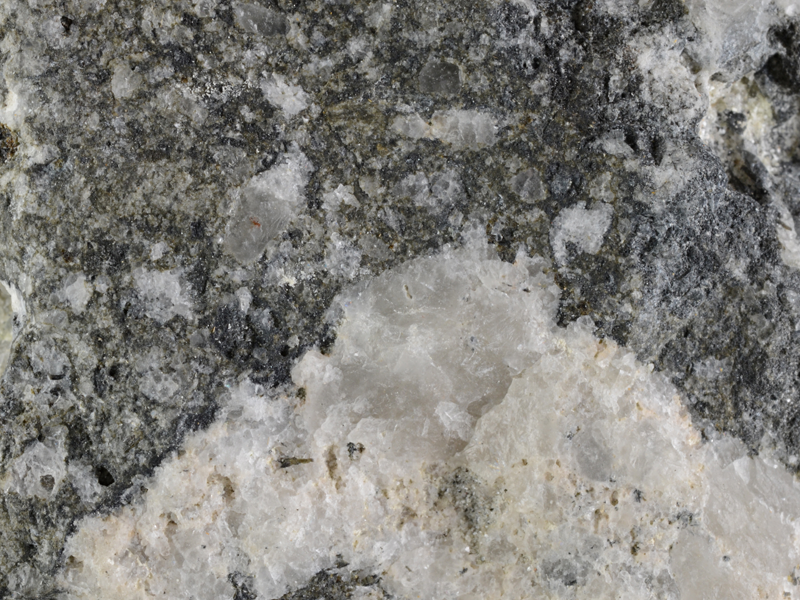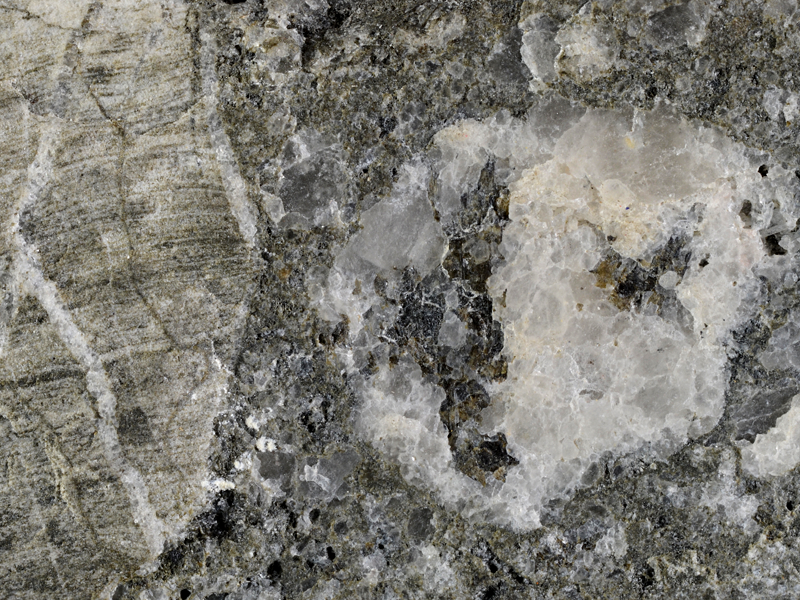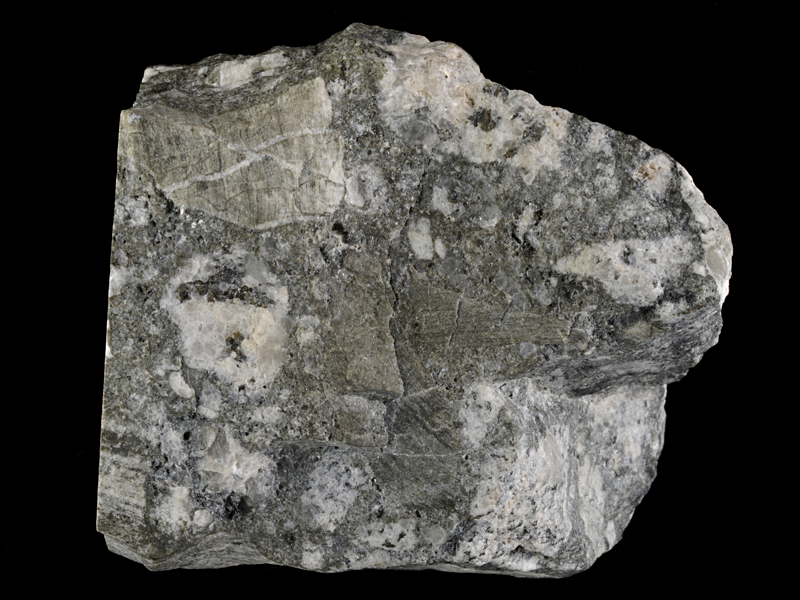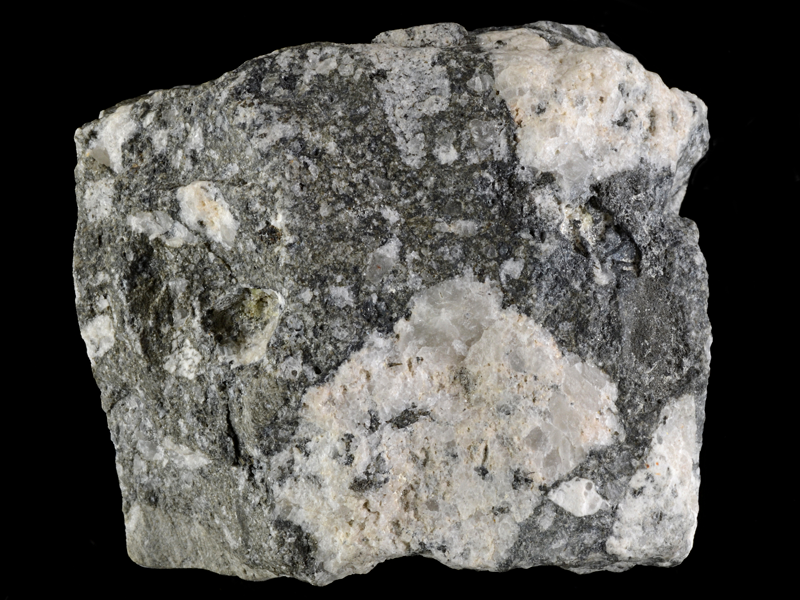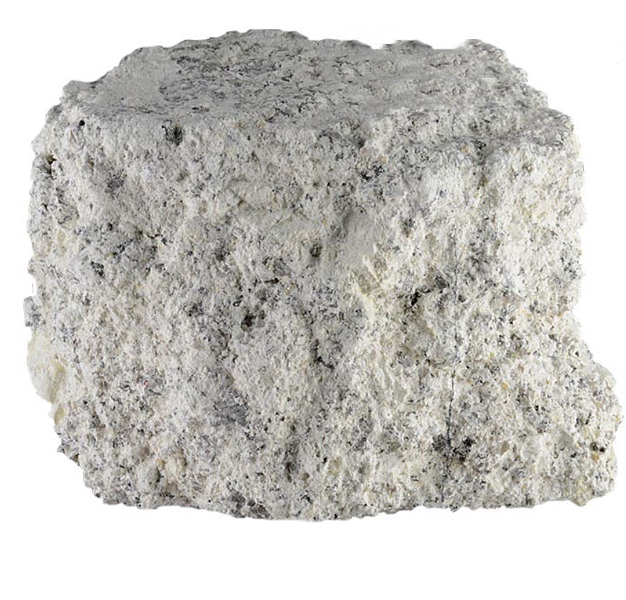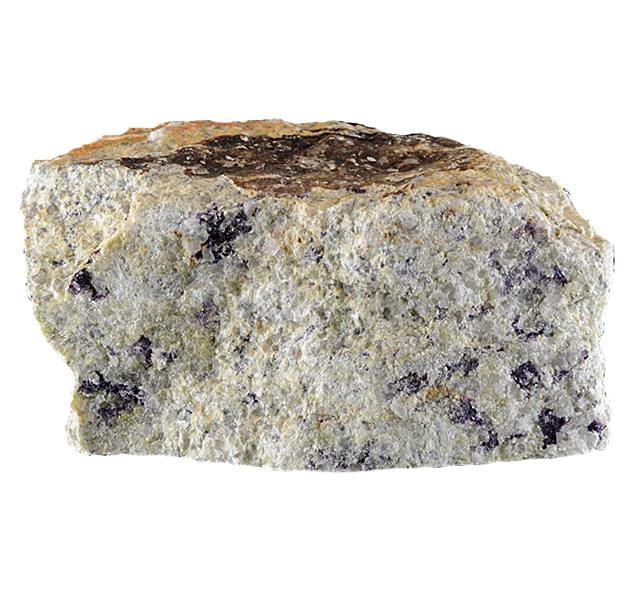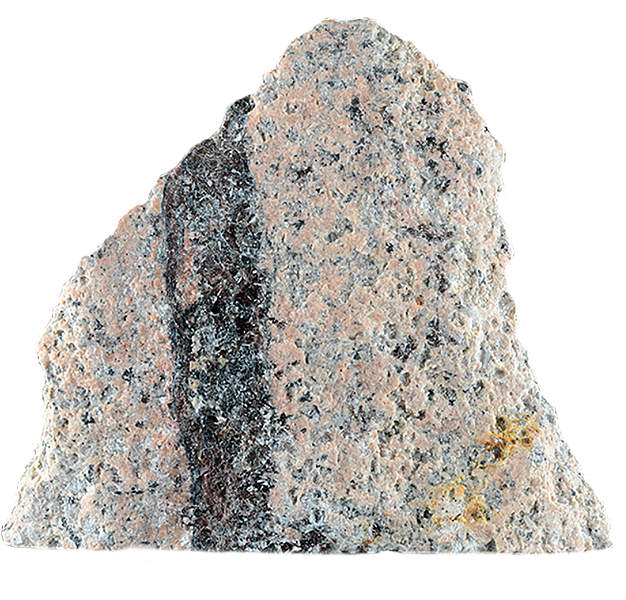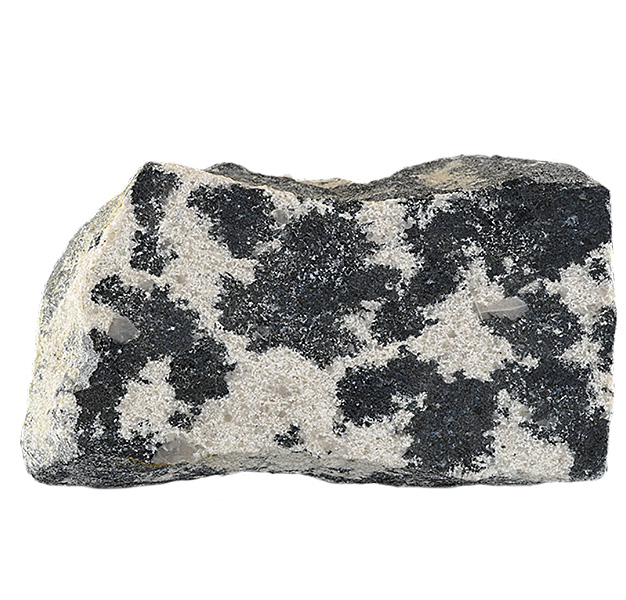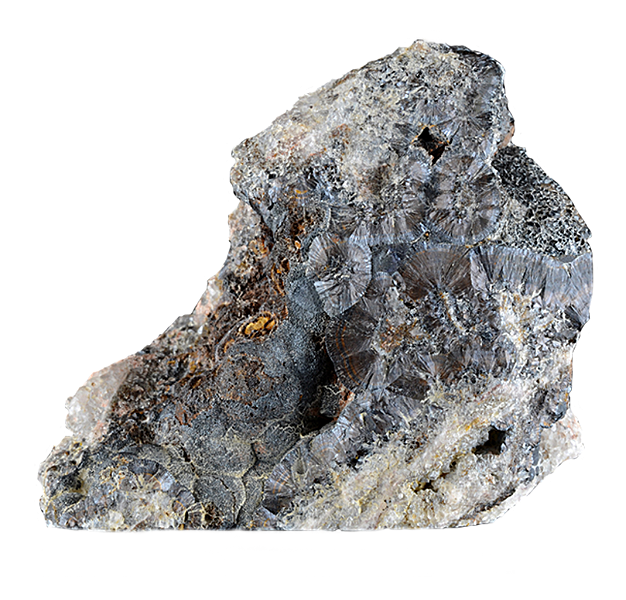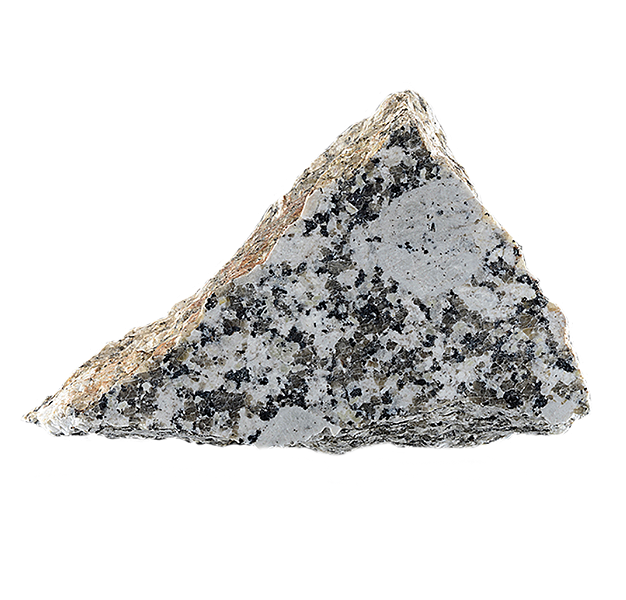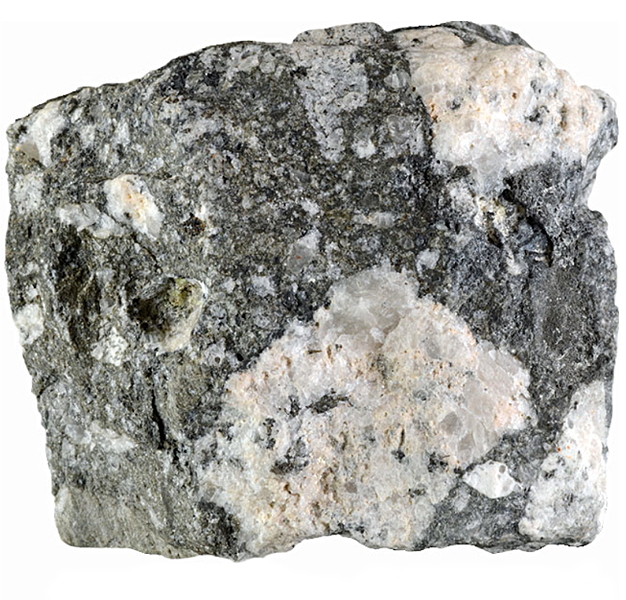
Fact sheet
This breccia comes from Trelavour Downs, St Austell, Cornwall. It was transformed from its original granite composition to this brecciated tourmaline-quartz rock by hydraulic pressure and high temperature fluids rich in boron and fluorine that passed through the rock.
In thin section the rock is formed of angular fragments that are veined and broken. One fragment displays fine banding displaced by the brecciation, and another contains larger magmatic tourmaline grains that appear to have been altered. The rock is almost entirely formed of two minerals, tourmaline and quartz.
A case study of the St Austell granite complex in Cornwall, England, illustrating the range of rocks associated with a granite intrusion. The earliest part of the complex is a siderophyllite (biotite) granite containing muscovite and tourmaline typical of a SW England granite, with many primary magmatic features.
This early intrusion was followed by the intrusion of an evolved volatile-rich magma which was the driving force behind a series of intense hydrothermal processes as volatiles escaped from this magma and helped to establish an extensive alteration halo (aureole). Boron, fluorine and lithium (as well as water) played major roles in the formation of the second intrusion and in the associated hydrothermal processes. Igneous activity lasted around 18 million years from 282 Ma (siderophyllite granite) to 265 Ma (fluorite granite).
